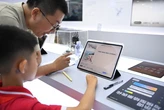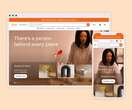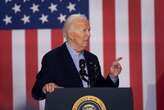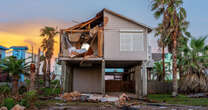Efficiently making your way around a national capital during the Olympics could be an Olympic sport in its own right.
Uber’s plan to avoid losing that game in Paris starts with a feature that gives drivers the ability to report crashes and traffic so that others don’t also find themselves (and their passengers) in the same stream of brake lights.
In the U.S., the Uber app only lets drivers flag incorrect directions and street closures. Now, with what the San Francisco company calls “user-generated navigation,” drivers in Paris will also get tools for times when the problem isn’t the route but all of the other drivers on it.
“This provides drivers with an easy, one-tap solution to report updates or inaccuracies with on-trip navigation,” says Divya Dalapathi, Uber’s director of product management. “This is the top requested feature from our drivers.”
Uber already has what Dalapathi calls “marketplace data”—a combination of “aggregated and anonymized trip traces” with data from “multiple third-party GPS providers”—that can offer higher-level insights, such as seeing that drivers have begun ignoring a street they had previously taken.
But live behind-the-wheel reports can allow Uber’s routing algorithms to work around traffic faster, with a check from dedicated teams to confirm driver reports with marketplace data. Dalapathi also plays up how this brings “a sense of freshness and trust” to the relationship between gig-economy drivers and their income source.
And in Paris, anybody trying to make their way through the city will face layers of security zones around Olympic facilities that will further complicate navigation. Uber plans to have staff in multiple locations watching trip activity around Paris to push navigation updates to apps as needed.
Drivers and riders in the U.S., however, will have to wait a bit longer (Uber isn’t giving an exact timeline) to see this feature arrive. That’s even though Google’s Waze—a navigation option in the driver app of Uber’s competitor Lyft—has long offered options to report crashes, traffic and other road hazards.
A second new feature has already begun showing up on Uber in the U.S. but will get a serious stress test during the Olympics: “congestion aware pickups” to optimize the last few hundred feet of a driver’s path to a rider for reduced congestion instead of reduced distance.
Uber says it has “guardrails” built into this feature to ensure that a passenger doesn’t have to walk more than about 800 feet, but in practice the bigger issue may be how often navigation services continue to botch pedestrian navigation.
Uber’s rider app is also now surfacing more details about the surroundings of a pickup, includeing 360-degree street panoramas, to underlying map data from such sources as TomTom and OpenStreetMap. The company plans to add more pedestrian-relevant details like the locations of crosswalks and visualizations of bus-only lanes in which an Uber shouldn’t be making a pickup.
As for my own top complaint about ride-hailing services—a driver who takes far longer to arrive than the app first predicted—Uber’s answer is to put more data into the app about the roads between you and your ride.
“We are already starting to show the traffic lights and stop signs,” says Dalapathi of this effort to streamline what she calls the “rendezvous moment.”
(But if you want a realistic sense of how much longer your vehicle might take to roll up, you’ll still do better flipping over to Google Maps or Apple Maps to get a look at traffic volumes.)
Any discussion of traffic in Paris, however, can’t sidestep the reality that this city has a world-class system of rail transit. The Metro goes almost everywhere in the city, including a just-opened extension to Orly Airport, and even the RER trains that tourists might think of as the French equivalent of commuter rail operate on frequencies closer to those of U.S. subways.
Uber’s app has offered transit directions for years, although you’ll probably have to scroll past the various Uber ride flavors to see trip and cost estimates that may lead you to opt out of hailing a ride in the app. But Uber has yet to offer hybrid routing like what you can get in Google Maps, in which an Uber ride covers the first or last mile of a trip otherwise conducted on public transit.
The Olympics won’t bring any change to that, but Uber does plan on providing tips to riders in Paris that include suggestions to include transit in their route planning.
And any discussion of Uber also has to involve driver income. The company—which made its first profit as a publicly-traded company in February—has said it plans to offer unspecified financial incentives to the 40,000-plus drivers it expects to see at work in Paris for the Olympics.
But after that, the primary upside to drivers of these new features should be more opportunities to pick up rides, not a greater profit per ride—in other words, a chance to make it up on volume.
“I think with more efficient routes and less idle time, their on-trip time should also naturally increase,” Dalapathi says.










No comments